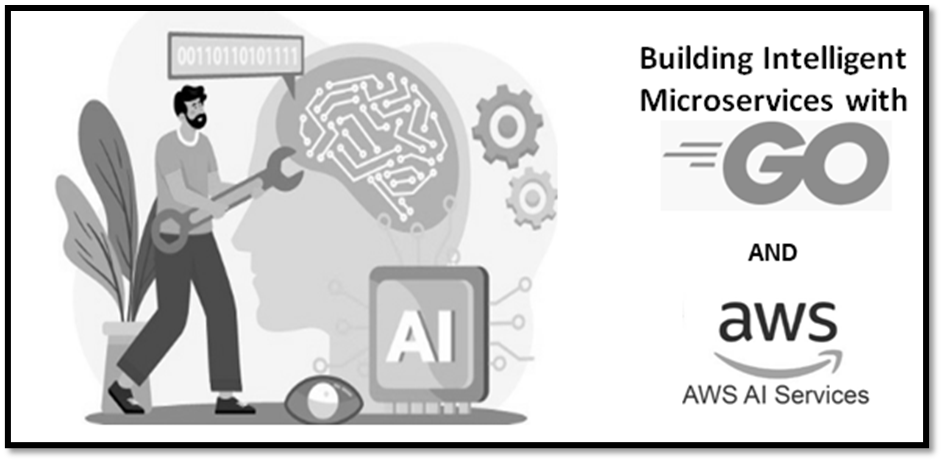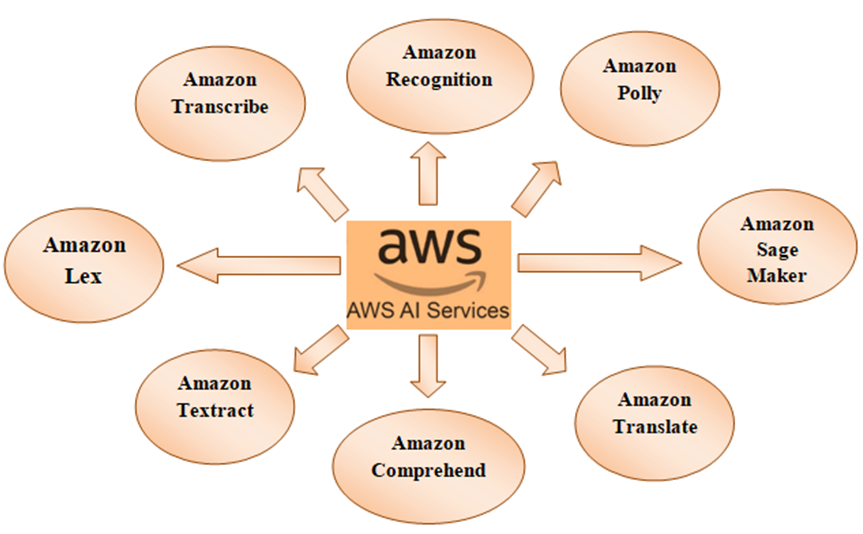Coupling Go’s lightweight programming capabilities with AWS’ robust AI services allows developers to build performant, scalable, and intelligent microservices devoted to diverse business needs. This blog explains how Go, and AWS AI services can be combined to create intelligent microservices, discusses the benefits of this approach, and provides a step-by-step guide to getting started.
Why Use Go for Microservices?
Golang, or Go, is a statically typed, compiled programming language that speaks Google. It aims to meet some requirements regarding simplicity, performance, and scalability. Combined, they make it an excellent choice for building microservices:
- Concurrency. Its built-in concurrency support through goroutines and channels lets developers easily address multiple tasks without incurring a big performance overhead.
- Fast compilation and execution. Because it is a compiled language, Go offers high execution speeds and fast build times, which is essential for microservices needing to respond quickly to user requests.
- Minimal memory footprint. Effective memory usage means that Go keeps its microservices small and, hence, cheap.
- Rich standard library. Its great built-in standard library includes tools for networking, HTTP handling, and JSON parsing, making it easier to develop microservices.
- Scalability. Go was intrinsic at the creation stage to keep the philosophy simple and foolproof, aiding the developers in building and maintaining scalable systems easily.

Why Choose AWS AI Services?
AWS offers developer AI service suites for NLP, computer vision, ML, and predictive analysis. The seamless combination of AWS AI services with microservices offers the following:
- The major advantage of AWS AI services is their SDK and API platform, which would make integration much easier on microservices made in Go.
- AWS automatically scales its services for demand to maintain consistent performance under varying workloads.
- AWS’s pay-as-you-use model ensures one only pays for the resources utilized.
- Pre-trained from Amazon NLP (Amazon Comprehend), image recognition (Amazon Rekognition), and text-to-speech (Amazon Polly), the list goes on the likes of these.
- AWS follows standard security protocols in the industry to protect user data for AI services.
Key AWS AI Services for Intelligent Microservices
Highlighted below are some AWS AI services that can be used for building intelligent microservices:
- Amazon Recognition. Provides image and video analysis capabilities such as object detection, facial recognition, and content moderation.
- Amazon Comprehend. An application that offers features such as natural language processing for sentiment analysis, entity recognition, and language detection.
- Amazon Polly. Text-to-speech conversion tool; apps with voice-enabled functionality are built.
- Amazon Sage Maker. ML model building training and deployment tool.
- Amazon Translate. Provides real-time and batch language translation.
- Amazon Textract. Extracting text and data from forms and tables in scanned documents.
- Amazon Lex. Enables the creation of conversational interfaces for applications using voice and text.
- Amazon Transcribe. Converts speech into text for applications like transcription services and voice analytics.

The Architecture of Intelligent Microservices With Go and AWS
The architecture of intelligent microservices involves several layers:
- Frontend layer. User interfaces or APIs that interact with end users.
- Microservices layer. Go-based microservices that handle specific business functionalities. Each Microservices communicates with the AWS AI services for processing.
- Data layer. Includes databases or data storage solutions, such as Amazon RDS, DynamoDB, or S3, for managing application data.
- AWS AI integration layer. AWS AI services that process data and return results to the microservices.
- Monitoring and logging. Tools like AWS CloudWatch and AWS X-Ray to monitor the performance and diagnose issues in the microservices.
A Step-by-Step Guide
Step 1: Setting Up the Development Environment
Go Configuration Basics
Download and install Go from the official Go website.
After installation, have your Go workspace set up and environment variables specified. Once Go is ready, install AWS SDK for Go for AWS services integration.
Configure your AWS credentials using AWS CLI for secure authenticated access to your services.
Step 2: Design the Microservices
Channel the microservices through their specialization. For image analysis service, set up Amazon Rekognition to identify objects on an image; use Amazon Comprehend as a sentiment analysis service that analyzes user feedback; and utilize Amazon Polly as the text-to-speech conversion service to speak textual notifications.
Each microservice solves a particular business requirement without losing flexibility.
Step 3: Integrating AWS AI Services
Make the necessary interconnections between microservices and AWS AI services by creating AWS sessions, starting the service client, and calling the appropriate APIs. At this juncture, proper communication is ensured and remains efficient between the microservices and AI services, thus giving intelligent results.
Step 4: Deployment of the Microservices
After microservice development, dockerize the microservices for portability and consistent work across environments. Appropriately configure the containers for the various services. Use Kubernetes/AWS ECS to orchestrate and manage the deployment of the containerized microservices for greater availability and scalability.
Monitor performance and enable logging through AWS CloudWatch, while having the Auto Scaling groups to cater to the different workloads.
Step 5: Testing and Optimization
Conduct thorough unit and integration tests to verify that every microservice works as it should. Understand microservice communication performance with respect to AWS services to boost its performance and improve responsiveness and resource utilization. The frequent testing and process iteration would serve to ensure the reliability and scalability of the system.
Benefits of Using Go and AWS AI Services
- With improved productivity. Go’s simplicity and managed services of AWS reduce the time and effort needed for intelligent application building.
- Improving scalability. The lightweight Go combined with elastic AWS infrastructure guarantees the seamless scale of microservices.
- Cost efficiency. The pay-as-you-go pricing model of AWS and Go’s low memory footprint enhances cost savings.
- Intelligence. AWS AI services add intelligent capabilities to microservices, like advanced functionalities such as sentiment analysis, image recognition, and speech synthesis.
Conclusion
Building intelligent microservices with the combination of Go and AWS AI services thus offers great performance, scale, and advanced functions. With the strengths of Go’s efficient design and AWS AI technologies for intelligent apps, developers are already creating microservices that meet modern business needs. Whatever the goal better customer experience, improved business propositions, or real-time analysis-integration of Go and AWS requires both adaptability and sturdiness in application ecosystems.
The deployment of microservices allows businesses to innovate faster and to easily adapt to changing requirements while not breaking the whole system. Between this, AWS AI services allow for many easily integrated pre-trained models and tools. This reduces AI-driven solutions’ complexity, giving teams the time and space to deliver value to their users.









